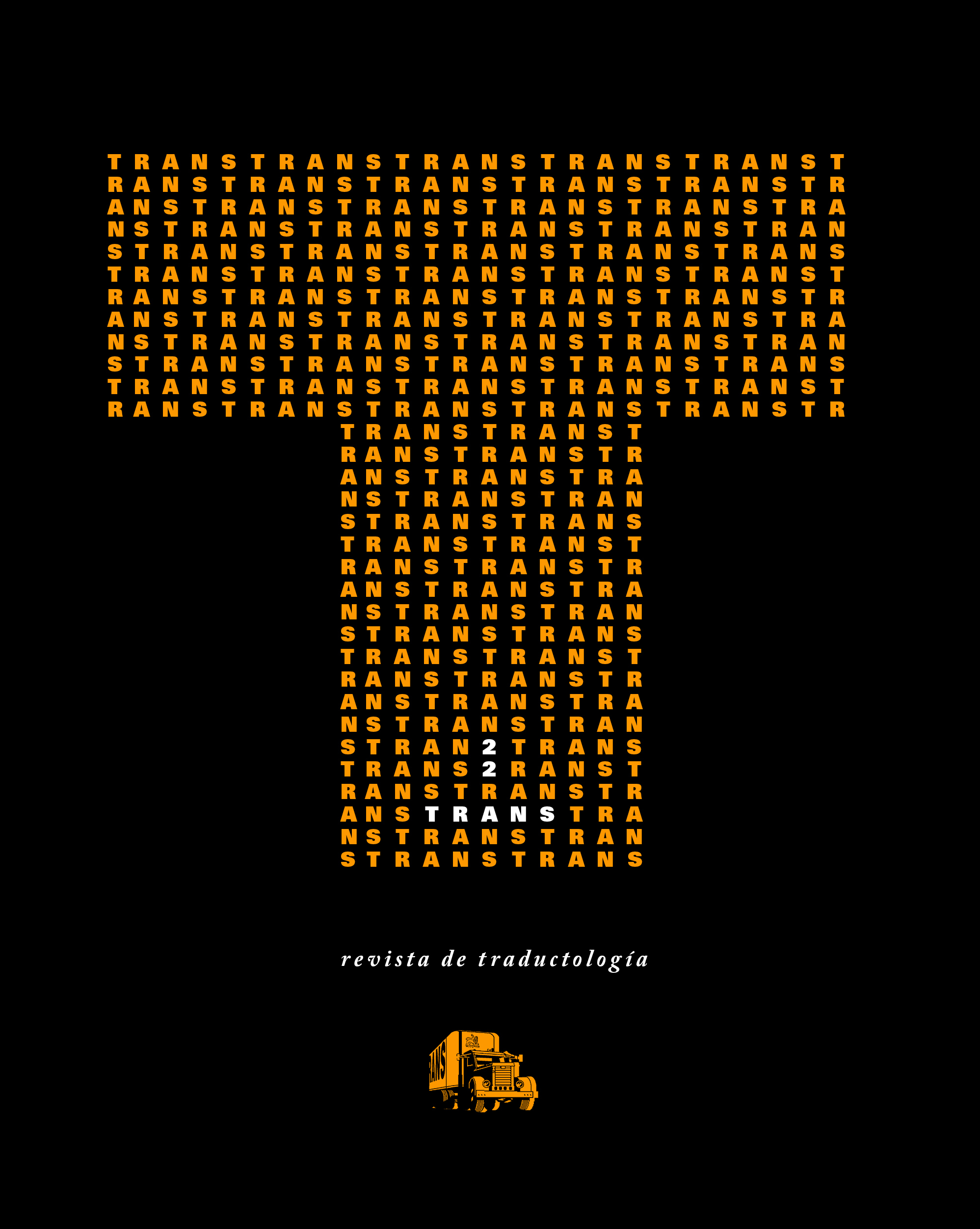The Non-Specialist Translator as confronted with the Occurrence of Factual Errors in an Instructional or Popularizing Source Text: a Case Study on the Ideal, the Sufficient, and the Unacceptable
DOI:
https://doi.org/10.24310/TRANS.2018.v0i22.2967Keywords:
communicative translation, science education and popularization, source-text factual error, scientific and technical translationAbstract
The following article emphasizes that factual errors are relatively frequent in all sorts of instructional and popularizing texts, and that,
within the framework of communicative translation, it is necessary
for the translator to spot those defects in the source text and to rectify
them in the target text. Focusing on an important factual error
present in a popularizing book on evolutionary biology published by
Oxford University Press, three categories of translators of instructional
and popularizing texts with scientific-technical content are distinguished according to the ease and to the resources with which
they can detect (and rectify) such textual flaws, i. e., the specialist
translator, the semi-specialist translator, and the non-specialist
translator.
Downloads
Metrics
Publication Facts
Reviewer profiles N/A
Author statements
Indexed in
-
—
- Academic society
- N/A
- Publisher
- Universidad de Málaga
References
Beaumont, André y Pierre Cassier (1987). Biologie animale. Les Cordés, Anatomie comparée des Vertébrés, 6.ª ed., París: Dunod.
Fleischmann, Eberhard y Peter A. Schmitt (2004). «Fachsprachen und Übersetzung», en Harald Kittel, Armin Paul Frank, Norbert Greiner et al. (dir.), Übersetzung / Translation / Traduction. Handbücher zur Sprach- und Kommunikationswissenschaft, n.º 26.1. Berlín/Nueva York: Walter de Gruyter, 531–542.
Garrido Rodrigues, Carlos (2015a). «Deficiencias del texto de partida en la traducción de textos destinados a la enseñanza y divulgación de la ciencia», Meta, 60/3, 454–475.
Garrido Rodrigues, Carlos (2015b). «Tres persistentes falacias zoológicas, reverberadas/debeladas en la traducción de textos científicos de carácter didáctico», Panace@. Revista de Medicina, Lenguaje y Traducción, 41, 60–72.
Garrido Rodrigues, Carlos (2016). A Traduçom do Ensino e Divulgaçom da Ciência, Vigo: Servizo de Publicacións da Universidade de Vigo.
Hennig, Willi (1999 [1966]). Phylogenetic Systematics, reimpr. 3.ª ed., trad. D. Dwight Davis y Rainer Zangerl, Urbana: University of Illinois Press.
Horn-Helf, Brigitte (1999). Technisches Übersetzen in Theorie und Praxis, Tubinga: A. Francke Verlag.
Kyrieleis, Armin y Hannes Paulus (2000). «Extremitäten», en Rolf Sauermost (dir.), Lexikon der Biologie, Heidelberg: Spektrum Akademischer Verlag/Elsevier, s.v.
Liem, Karel F., William E. Bemis, Warren F. Walker y Lance Grande (32001). Functional Anatomy of the Vertebrates. An Evolutionary Perspective, Belmont: Thomson/Brooks/Cole.
Mickoleit, Gerhard (2004). Phylogenetische Systematik der Wirbeltiere, Múnich: Verlag Dr. Friedrich Pfeil.
Peterson, Roger, Guy Mountfort y P. A. D. Hollom. 1989. Guía de campo de las aves de España y de Europa, trad. Mauricio González Díez, Barcelona: Ediciones Omega.
Sander, Martin (2004). «†Ichthyosauria, Fischechsen», en Wilfried Westheide y Reinhard Rieger (ed.), Spezielle Zoologie. Teil 2: Wirbel- oder Schädeltiere, Heidelberg: Spektrum Akademischer Verlag, 352–353.
Schmitt, Peter A. (1999a). Translation und Technik, Tubinga: Stauffenburg Verlag.
Schmitt, Peter A. (1999b). «Defekte im Ausgangstext», en Mary Snell-Hornby, Hans G. Hönig, Paul Kußmaul y Peter A. Schmitt (ed.), Handbuch Translation, 2.ª ed., Tubinga: Stauffenburg Verlag, 147–151.
Schultze, Hans-Peter y Rainer Schoch (2004). «Tetrapoda, Landwirbeltiere», en Wilfried Westheide y Reinhard Rieger (ed.), Spezielle Zoologie. Teil 2: Wirbel- oder Schädeltiere, Heidelberg: Spektrum Akademischer Verlag, 303–306.
Downloads
Published
How to Cite
Issue
Section
License
All contents published in TRANS. Revista de Traductología are protected under the Creative Commons Attribution-NonCommercial-ShareAlike 4.0 International (CC BY-NC-SA 4.0) license. All about this license is available in the following link: <http://creativecommons.org/licenses/by-nc-sa/4.0>
Users can copy, use, redistribute, share and exhibit publicly as long as:
- The original source and authorship of the material are cited (Journal, Publisher and URL of the work).
- It is not used for comercial purposes.
- The existence of the license and its especifications are mentioned.
- ShareAlike — If you remix, transform, or build upon the material, you must distribute your contributions under the same license as the original.
There are two sets of authors’ rights: moral and property rights. Moral rights are perpetual prerogatives, unrenounceable, not-transferable, unalienable, imprescriptible and inembargable. According to authors’ rights legislation, TRANS. Revista de Traductología recognizes and respects authors moral rights, as well as the ownership of property rights, which will be transferred to University of Malaga in open access.
The property rights are referred to the benefits that are gained by the use or the dissemination of works. TRANS. Revista de Traductología is published in an open access form and it is exclusively licenced by any means for doing or authorising distribution, dissemination, reproduction, , adaptation, translation or arrangement of works.
Authors are responsable for obtaining the necessary permission to use copyrighted images.













21.png)
